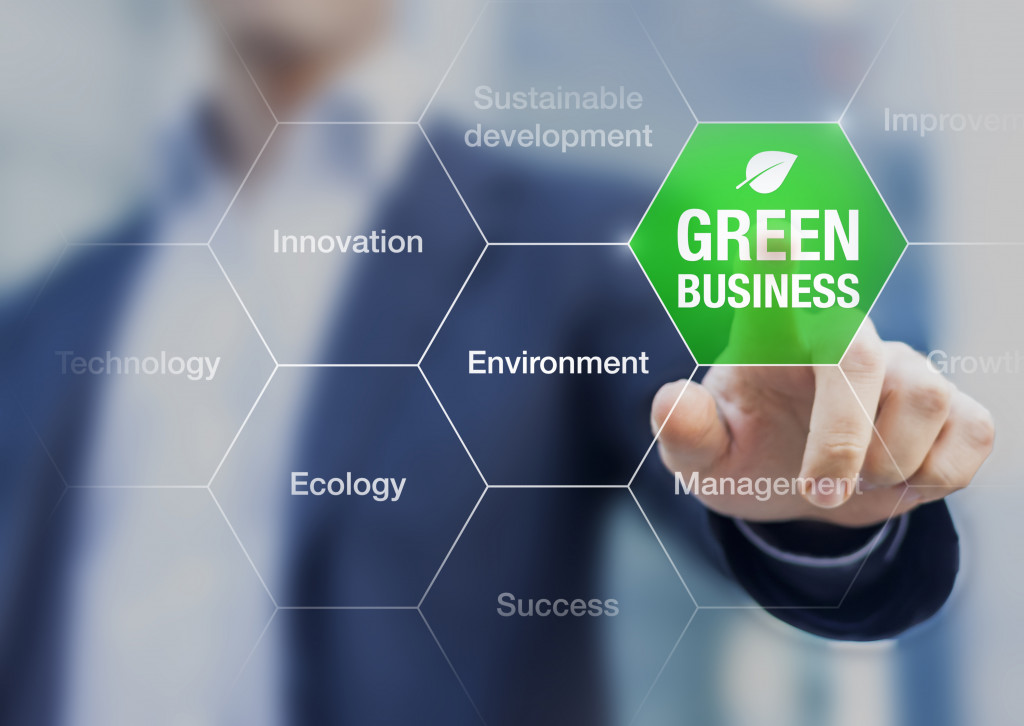- Use sustainable materials in construction for a more environmentally friendly office building.
- Install energy-efficient lighting fixtures, windows, and HVAC systems to reduce electricity consumption.
- Consider strategies like rainwater harvesting or greywater reuse systems to reduce reliance on municipal water sources.
- Incorporate air purification systems, natural daylighting, fresh air circulation, and ergonomic furniture into the design.
- Careful planning of these elements can create an economically and environmentally sound sustainable office space.
Creating a sustainable office space is not only good for the environment but also benefits businesses looking to lower their costs over time. When constructing or renovating a green office building, you can efficiently use resources, save money on energy bills, and create a healthier environment for your employees by considering four key elements- materials, energy, water, and health.
1. Materials
Using sustainable materials in construction is the first step toward creating a more environmentally-friendly office building. Sustainable materials, such as bamboo, cork, recycled steel, and other natural products, are renewable and biodegradable. These materials often require less energy to produce than traditional materials like concrete or wood; they also tend to be lighter and require less maintenance over time. Additionally, sustainable materials often have higher insulation values than conventional ones, which can help reduce heating and cooling costs.
2. Energy

Using energy-efficient lighting fixtures, windows, and HVAC systems can significantly reduce the electricity in an office building. High-efficiency LED lighting fixtures, for example, use up to 80% less energy than traditional incandescent bulbs. Low-E windows and insulated doors can also help keep the building cooler in summer and warmer in winter, reducing the need for air conditioning or heating. Installing an HVAC system that is optimized for efficiency can also reduce energy costs by up to 30%.
Here are four other ways to make your office more sustainable in terms of energy:
Security systems
Smart security systems use motion sensors to detect when an office is unoccupied and turn off the lights. This helps reduce energy consumption as well as saves money on electricity bills. Security systems with integrated magnetic locks are also a great option. Installing maglocks on your office’s doors allows you to keep out potential intruders while reducing energy consumption by eliminating the need for constantly running an electronic security system.
Solar panels
Office buildings with sufficient sunlight can benefit from solar panel systems, which generate free electricity for up to 25 years. Solar panels also reduce the grid’s electricity demand and generate no emissions.
Wind turbines
Wind turbines are a great way to generate clean, renewable energy in an office building. Wind turbines can provide up to 50% of an office’s electricity needs and also help reduce reliance on the grid. Smaller-scale turbines can be installed on the roof of an office building, while larger ones can be placed in open areas.
Geothermal technology
Geothermal heating is an innovative and cost-effective way to heat or cool an office building. By installing a geothermal system, you can cut your energy costs by up to 70%. Geothermal technology allows you to use the earth’s naturally warm or cool temperatures to regulate your office building’s temperature.
3. Water

When designing a sustainable office building, it’s also important to consider water consumption. Installing low-flow toilets, sinks, and shower heads can significantly reduce water usage while maintaining comfort levels. Other strategies, such as rainwater harvesting or greywater reuse systems, can reduce reliance on municipal water sources. Though water costs may be low in some areas, water costs are likely to increase over time as resources become more scarce. By installing efficient water systems now, you can save on water bills and help conserve water for future generations.
4. Health
Finally, a healthy office environment is essential for employee well-being and productivity. To ensure that your office building is as healthy as possible, consider installing air purification systems such as HEPA filters to remove allergens and other pollutants from the air.
You can ensure your workers are comfortable and productive by incorporating natural daylighting, ample fresh air circulation, and ergonomic furniture into the building design. Additionally, using nontoxic materials with low off-gassing potential can reduce indoor air pollution and help create a healthier work atmosphere.
In Summary
By considering these four elements — materials, energy, water, and health — when creating or renovating your office building, you can make smart use of resources while also reducing your costs over time. These strategies not only benefit the environment but also help create healthier workplaces for employees all around. With careful planning and consideration of these four elements, businesses can create an economically and environmentally sound sustainable office space.
